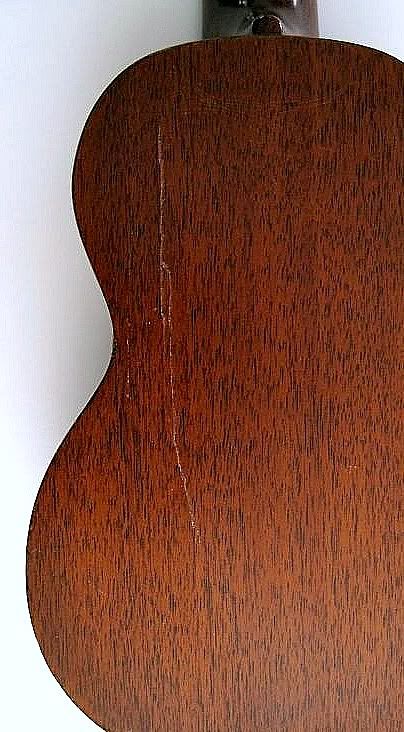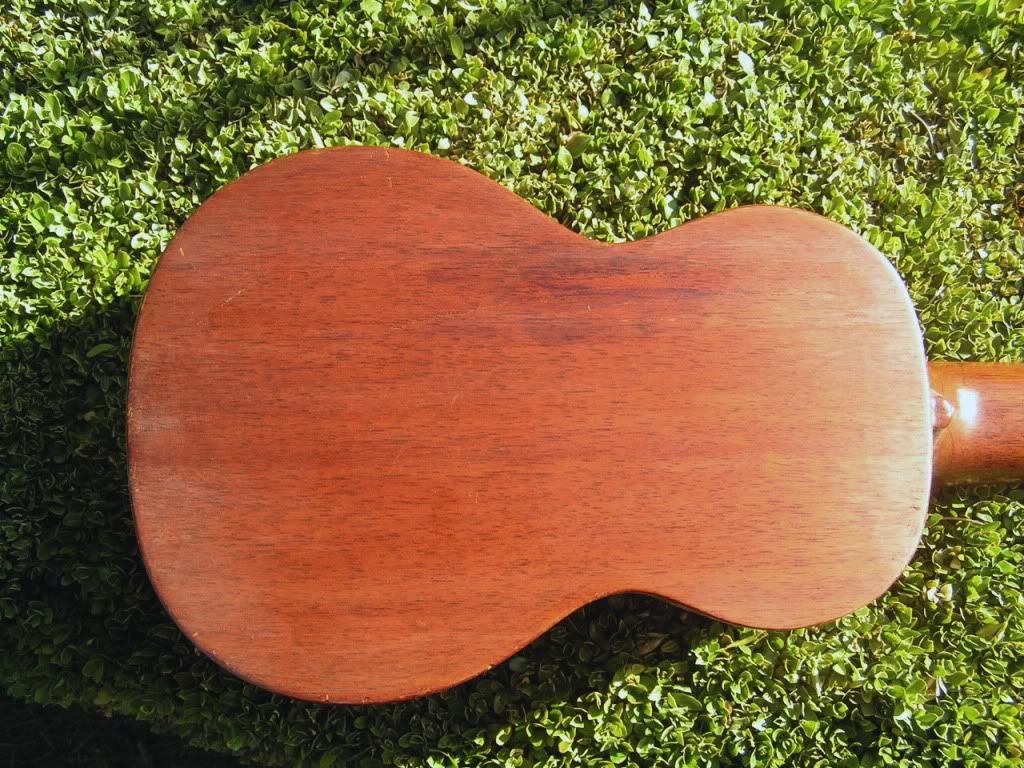Timbuck
Well-known member
I'm about to start on a repair to a Martin soprano..a 150mm long crack..someone has previously try'd to repair it from inside with epoxy..could give me a few problems  ..I'll see how it goes.
..I'll see how it goes.



I ain't no Pro ..I've never repaired a crack like this before..but ive read a lot about it on the Web....First I filled the crack with thin hot Hide glue and used the percussion method to get the glue well into the defects..I left it overnight to set, and this morning it had pulled together quite well...a lot of the laquer around the defect is cracked and splintering, so I have been sanding away the damaged laquer to a feathered edge.Please tell us how you do it. I've never had to do one but I'd like to see how a pro does it.
Sounds nasty..if you Had it..where is it now? Pete...or did you mean "Have"I had a blinged up tenor similar to the image a posted here with cracks in the front and side where it left the wall and bounced on a stone floor. .

Mrs Timbuck gave me the uke back...the crack has been sorted..it's not completely invisible but it is sound..the Guy who put epoxy into the crack from the inside should be shotit prevented me from pulling the edges completly in and it distorted the wood a bit .. and it had to be sanded flush....But it will do for me
..it's still going to have another couple of coats of FP and then some Beeswax.

Looks like a very nice job to me! Please, what is "FP?" Also, is the Beeswax to even the surface sheen?
FP is French Polish or Shellac...the beeswax is for protection
